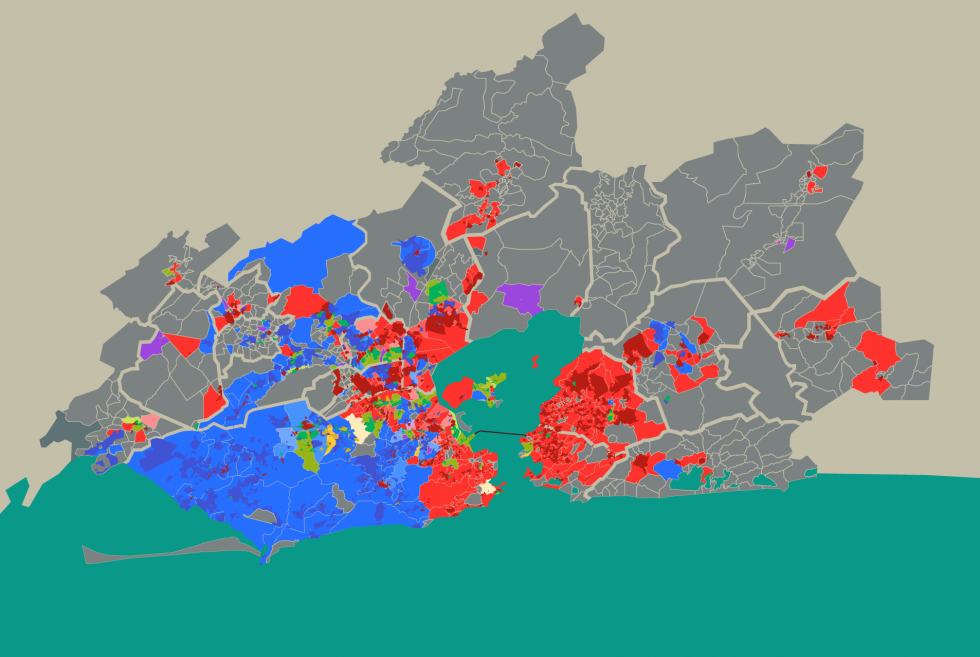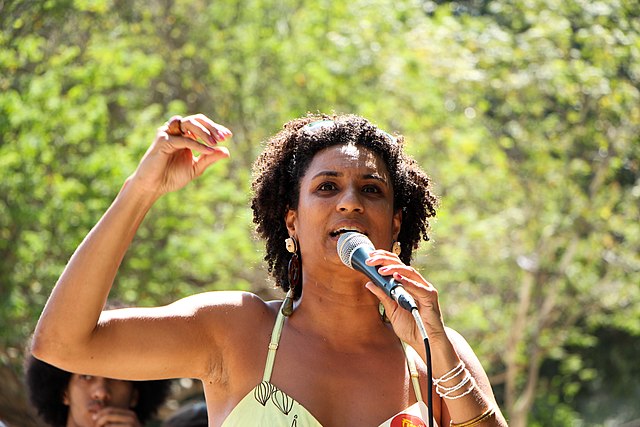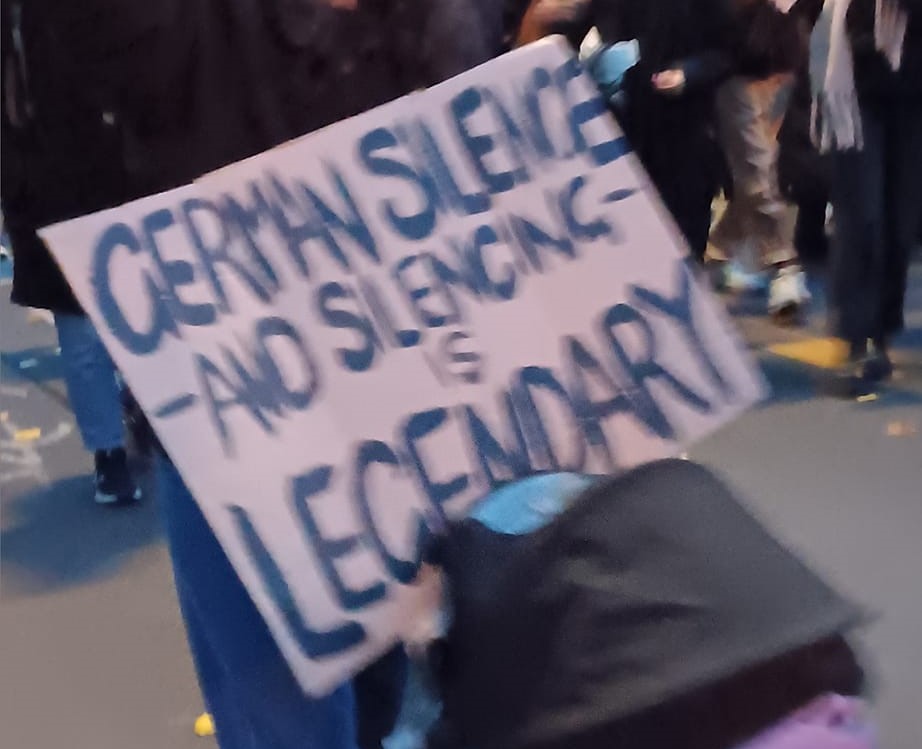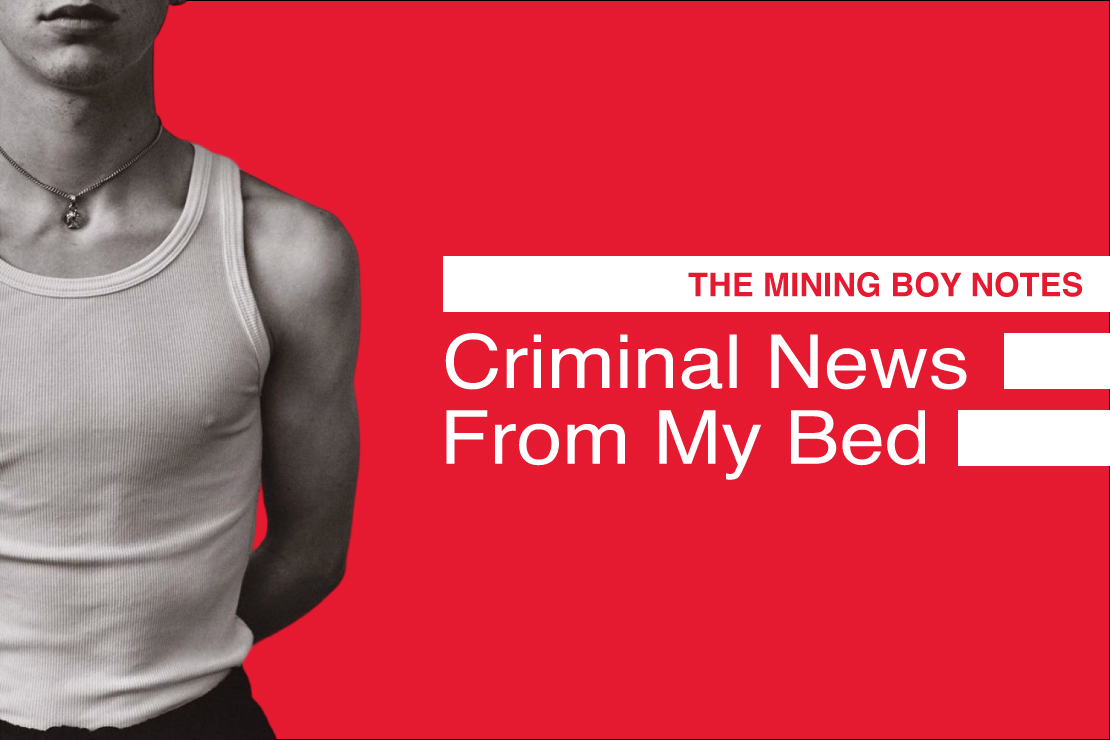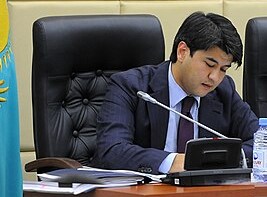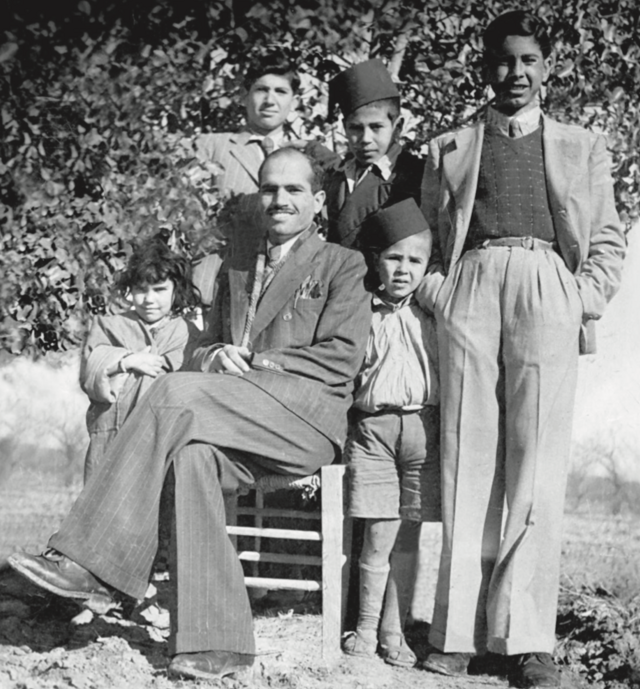Introduction: “Despite Everything”
[“Despite Everything is a quote from Rosa Luxemburg. In German: “Trotz alledem!“]
The World is celebrating the 75th anniversary of the establishment of the State of Israel. At the same time, Palestinians and their plight are simply overlooked. This essay will put them center stage.
I will start with an important question:
What was the effect, or in the words of Constantine Zurayk, what was the meaning of the establishment of the State of Israel for the Palestinians, the indigenous population of the land between the Mediterranean coast and the Jordan River Valley?
For Zurayk, it was the disaster, an-Nakba in Arabic: 750 000 Palestinians were driven out of their homeland and no Palestinian state was allowed to come into being.
When looking at the way Palestinians and Arabs dealt with this disaster of 1948, I will focus on agency. In particular, I will look at the proposed ways to overcome it. In this context, I will put individuals center stage, in particular intellectuals and writers, like Constantine Zurayk and Salman Abu Sitta.
I will not try and add to the analyses of Israel as a settler-colonial state. But I want to stress that the first analysis of Israel as a settler-colonial state was published by Palestinian historian Fayez Sayegh [Sayegh (1965)], and a few years later a second one by French Marxist Maxime Rodinson [Rodinson (1967) and Rodinson (1969)]
We will always be indebted to the work of Patrick Wolfe. In his path-breaking article „Settler Colonialism and the elimination of the native” [Wolfe (2006)], he was able to show that settler colonialism is not a single historical event, but rather possesses a structure and constitutes an historical process aiming at the elimination of the native.
In my contribution, though, I want to focus on the role of individuals in history and in political processes. I hope to show through the example of Constantine Zurayk and Salman Abu Sitta, how their work, in the case of Abu Sitta exclusively empirical, preceded and even anticipated the theory of settler colonialism.
I will argue that Zurayk and Abu Sitta are immensely relevant until today for Palestinian and Arab intellectuals, activists and political parties. The main reason is twofold. Both Zurayk and Abu Sitta insist on a critical respectively self-critical approach to the analysis of the 1948 disaster as well as to developments until today. This involves also an open critique of those in power. Secondly, both insist on the importance of truth, as long as it is based on empirically established facts. Both are convinced that right in the end will overcome might. And both believe in the possibility of change, provided that all involved endeavor to bring it about.
Critics of Zurayk and Abu Sitta might accuse them of naïve idealism. In their defense, I should like to quote Lenin, certainly not an idealist: “It is necessary to dream, but with the condition of believing in our dreams. To examine real life carefully, to confront our observation with our dreams, and to perform our fantasy scrupulously.”
Zurayk and Abu Sitta certainly have been following Lenin in this respect, and they have been doing all in their power to turn their dreams into reality.
In the first part of this essay I want to introduce Zurayk’s small book – almost forgotten today – which he published in 1948 in Beirut under the title: ma’na an-nakba. The book was translated into English in 1956 and also published in Beirut under the title “The Meaning of the Disaster” [Zurayk (1956)].
I will first present and discuss his arguments, before drawing a line from Zurayk in 1948 to Salman Abu Sitta in 2022, when Abu Sitta established the Palestine Land Studies Center (PLSC) at the AUB, the same university where Zurayk taught. Three texts will be in the center of my analysis of Salman Abu Sitta: his book, Mapping my Return [Abu Sitta (2016)], his speech at the AUB for the opening of the PLSC [Abu Sitta, 2022], and last but not least his remarkable speech at Edinburgh University on November 2, 2022, 105 years after the proclamation of the Balfour Declaration.
I. Constantine Zurayk
Who was Constantine Zurayk? He was born in Damascus and studied at the American University in Beirut, before moving on to Princeton, where he got his PhD. Back in Beirut, he started to teach at the AUB. Between 1945 and 1947, he worked briefly as a diplomat, first at the Syrian Embassy in Washington, then at the UN in New York. Upon his return to academic life, he served as Vice-President at the AUB, then for 3 years as President of Damascus University. In 1954, he made his final return to Beirut, was president of the AUB from 1954 until 1956, and after that continued to teach there as a professor. He died in August 2000 [See introduction to English translation of an-nakba, written by the translator, Bayly Winder. See also Collected works of Constantine Zurayk].
The Meaning of the Disaster
What made him write this book right after the establishment of the State of Israel?
As an academic, a former diplomat, but above all as a progressive Arab nationalist, he had to respond to these momentous events. Already in December 1947, he had been asked to write an article for the Beirut newspaper al-Amal, and on May 31, 1948, he was given the chance to deliver a speech on Palestine live on Lebanon Radio.
For Zurayk, the proclamation of the State of Israel on the land of historic Palestine constituted “a disaster (nakba) in every sense of the word” [Zurayk (1956), p2)].
What was done to the Palestinians in 1948, when their land was taken away from them and handed over to immigrants and settlers, this IS the disaster [Surayk (1956. pp5-6, 9, 69-71.]. In other words, 1948 resulted in their wholesale expulsion from Palestine and deprived them of their right to self-determination.
For Zurayk, the Nakba, on one hand, was a matter of
- expulsion of 750,000 out of a total of 900,000 Palestinian inhabitants in the area of the newly created state of Israel, not least with the help of a whole series of the most brutal massacres. Over 500 villages were destroyed and razed to the ground. Almost all Palestinians were expelled from the important coastal cities of Jaffa, Haifa and Akka [Pappe (2014). See also Morris (1989), Manna (2022), Khalidi (1961) and Raz (2021:2)}.
- systematic prevention of the return of the displaced Palestinians after the end of the violence and the beginning of the ceasefire [Masalha (2003). See also Habibi (1974)].
On the other hand, the Nakba for him
- resulted in the failure to create a Palestinian state. Instead, Israel expanded in clear violation of the UN partition plan. Jordan for its part, and with the full support of Great Britain and Israel, annexed the West Bank and East Jerusalem [Shlaim (1988)].
What are the main contributions of Zurayk in his little book and what makes them valid until today?
He gives his readers a detailed description as well as a new conceptualization of the disaster. Zurayk, in contrast to Sayegh, Rodinson and Wolfe, uses the term Imperialism instead of settler-colonialism, but uses the term for Jewish/Zionist colonies in Palestine [Zurayk (1956), pp 2, 5, 15].
Most relevant for the situation of Palestinians and Arabs today is his bitter and acerbic critique of Arab States, whom he considers responsible for the Nakba. While he concedes the strength of Zionism and of the newly created state of Israel, in particular the wide international support for it [Zurayk (1956), pp 4-5], he uses the example of Zionism and Israel to deepen and also to conceptualize his critique of Arab states and Arab society.
Throughout his book, we find an underlying demand for realism [Zurayk (1956), pp6-9 and passim… all over the book], starting with the necessity to be self-critical. Only if Palestinians and Arabs confront reality critically, will they be able to start long-term planning in order to achieve their clearly defined goal: overcoming the nakba and liberating Palestine.
This self-critical assessment of the Arab world, of its states and of Arab society will achieve the required and overdue “fundamental change in the situation of the Arabs, and a complete transformation of their modes of thought, action, and life.” [Zurayk (1956), p34]
This transformation is unavoidable, because in Zurayk’s analysis Arabs still live in past, have not arrived in modern life, even reject modern life. He contrasts this assessment with his analysis of the Zionist movement and of Israel. Zurayk sees them as modern, with a Western mentality, capable of living in the presence and planning for the future. Unlike the Arabs, they have achieved national unity, which served as the basis for their success in 1948 [Zurayk (1956), p34].
He therefore demands that Arabs need to recognize self-critically that until now they have not been able to constitute themselves as a nation. And without national unity, so Zurayk, they cannot realize their potentials for the future.
Zurayk’s central demand is the struggle for unity:
“… this unification which we seek in the fields of war, politics, economics, propaganda etc., is linked to the … present situation in the Arab. … However, the danger is great and imminent… It is not possible to wait for that fundamental transformation in the Arab situation which will ensure the basic and necessary unity capable of guarding the Arab being and defending it… Therefore, those in power … in the Arab states must place the general goal before particular goals; and public opinion in the various Arab lands must continuously urge co-ordination and unification, must exert as much pressure as possible in this direction, and must rebel at every division in the Arab front so as to overcome … the obstacles which today confront Arab security and thus protect … the Arabs in this battle.”
[Zurayk (1956), p24]
For Zurayk, it is the role of the elite, … a progressive, revolutionary elite, consisting … of Arab youth, to bring about the required transformation and to establish unity.
“This elite must … organize and unify itself into well-knit parties and organizations. These must stand on a unified … doctrine and must be bound by a strong … loyalty to which the elite will subjugate all its divergent tendencies….”
[Zurayk (1956), p43]
Only if the elite bases itself on society at large and if it works for the participation of popular forces, will it be successful.
“The struggle must not be limited to governments and regular armies, but it must extend to all classes of society so that every individual in the nation will undertake his share of it.”
[Zurayk (1956), p25]
And he continues with a clear warning:
“Let this be a warning to those who distrust the people and oppose popular participation in the struggle…. It will perhaps first revolt against those who have repressed it. Then it will be released in all parts of the nation so that it can defend the fatherland ….”
[Zurayk (1956), p27]
The transformation, which Zurayk demands, is only possible if it is based on broadly defined development: economic, social and intellectual.
As a first step, Arabs, led by the new elite, must end feudalism and tribalism, sectarianism, fatalism and occultism.
In a second step, they must achieve the separation of state and religion.
In a third step, they must start to train their youth in the positive and empirical sciences.
The fourth step must consist of a process of industrialization all over the Arab world.
Last but not least, regimes in Arab states must be changed by the new elite, an elite supported by all classes of society.
To conclude, he poses a decisive question:
“Where is the road to this all-inclusive revolution… which will assure national progress”?
[Zurayk (1956), p41]
For Zurayk, it is the struggle of the new progressive, revolutionary elite, which he postulated. This elite, in order to be successful, had to be well organized, and ready to achieve the necessary transformation and the unity in the Arab world. Only through this transformation and only through unity, so Zurayk, can the Nakba be overcome and the Palestine problem be solved [Zurayk (1956), pp41-46].
Role of Zurayk in pushing for the realization of these goals
At the AUB in Beirut, Zurayk had Arab nationalist students who were very active and eager to translate his teachings into action. They were organized in the group ‘urwa al-wuthqa, which had developed around the journal with the same name. Constantine Zurayk served as their advisor.
Zurayk demanded that the students had to establish a new political organization, based on science, under their leadership.
An anonymous article in al-‘urwa in 1951 took up this demand as the basis for overcoming the Nabka. And George Habash from al-Lydda, student of medicine at the AUB and an ardent admirer and follower of Zurayk, wrote an editorial for al-‘urwa in spring 1949:
“We have to tell the readers of al-‘urwa … about those who left the ship to the storm [here he is referring to the Arab leaders and regimes, HB]. But we want to stress that this nation has youth with a strong will, ready to confront all difficulties, even ready to die… they will fight until they have reached safe shores … and save the nation”.
The students were ready to follow the program laid out by Zurayk.
However, already in 1949, they got into problems with their teacher, because they were far too emotional and were drawn into blind actionism.
They decided to try and assassinate Arab leaders whom they considered responsible for the loss of Palestine. All of these leaders were traitors in their eyes, who could only be dealt with through violence. This violence, once successful, would make the Arab masses take up the struggle for liberation.
They established an underground organization, kata’ib al-fida’ al-‘arabi, and attempted – in vain – to assassinate Arab leaders. The whole endeavor proved short-lived and ended in total failure [Baumgarten (1991)].
Only in 1952, after their graduation and after they had moved to Jordan or to their respective home-countries, did Habash and his friends establish an organization as postulated by Zurayk: harakat al-qaumiyin al’Arab, and later, in 1967, the PFLP.
The main goal of both organizations was, again as demanded by Zurayk, a fundamental transformation of the Arab World and of the Arab individual, a revolution in the true sense of the word. The Arab people, led by the nationalist youth and their organization, would implement this transformation.
The young nationalists sketched an ideal-type of the revolution:
It would transform everything from scratch and establish a new system in the Arab world, without any exploitation. Borders and single states would be done away with. All armies of occupation in the whole region would be driven out and with it the end of the state of Israel would be achieved. Only then would the Arab world be free, no longer subdued by other states and no longer exploited by the imperialist West. The new Arab nation state would exclusively serve the Arab nation.
II. Salman Abu Sitta
What connects Salman Abu Sitta to Constantine Zurayk and how does he build on Zurayk’s proposed transformation?
Who is Salman Abu Sitta? He is a Palestinian who directly experienced the disaster, the Nakba, as a ten-year old boy. While Zurayk was born in an Arab metropole, Damascus, and George Habash grew up in the small city of al-Lydda in the center of Palestine, Salman and his family are from the Bedouin south in Palestine. His father, Sheikh Husain Abu Sitta, occupied an important position as a leader of the local Bedouins. He was astonishingly open for modernization and development and built the first school for the children in the area. In order to get the project started, he even paid from his own pocket both for the school and for the salaries of the teachers.
The socioeconomic status of the family can best be guessed from the description of an Israeli officer in 1948 when the army came to destroy the Abu Sitta house.
“We went to the Abu Sitta home and were stunned: in the middle of the desert unbelievable richness: luxurious furniture, many Oriental and European clothes, a radio, a truck, a beautiful Bedouin sword made of silver, a large important archive of photos and documents…. Shakespeare’s Othello in English, by the side of the Kor’an”.
[Abu Sitta (2016), p 259]
Already as a child, Salman was introduced, first and foremost by his father, to the importance of education, development and modernization in general. After the Israeli army had driven them out of their home and transformed them into refugees in the neighboring Gaza Strip, Salman was sent to Cairo where he finished high school and then went on to study Engineering at the university. After graduation, he continued for his PhD in London, in Civil Engineering, with a focus on infrastructure. With his PhD, he was able to find work in the Gulf states, where he gained extensive experience over many years in the field of infrastructure development [Abi Sitta (2016), passim].
When looking at his education and his work, one cannot but help seeing him as the ideal student of Constantine Zurayk, in a way the embodiment or personification of the demands made by Zurayk from the new elite, which was supposed to develop and transform the Arab nation, unify it and liberate Palestine.
But in contrast to the students of Zurayk at the AUB, Salman Abu Sitta started out his struggle for Palestine on the individual level. However, this struggle possessed a very unique quality. It was empirical, scientific and oriented in two directions. His first goal was to dismantle the Zionist myth, the Zionist propaganda, of a land without people and of a desert which the Zionists made bloom. After all, this myth lives on, as the example of Ursula von der Leyen, Head of the European Commission in Brussels, shows when she claimed as late as 2023 how impressed she had been by Israel’s historical success in making the desert bloom. Abu Sitta wrote a letter to her in which he thoroughly shamed her [Abu Sitta (2023). In this letter, he took up quotes from von der Leyen’s congratulation to Israel on the 75th anniversary of its establishment, in particular her claim, “Israel made the desert bloom”, which he destroyed through the facts presented to her.]. His second goal, perhaps more important from the perspective of today, was the keeping alive of the Palestine of 1948 and before, in order to prepare for the return of Palestinians to their homeland.
He painstakingly collected information on everything, on the location of houses, villages and towns and cities, on agriculture, and on manufacturing. He searched for maps, photos and archive materials and gathered them together.
Finally, and now we turn to the present, he started to develop concrete plans for the return of the Palestinians to their home, from which they were driven out by sheer force in 1948. And his planning was, as Zurayk had demanded in his book in 1948, empirical and scientific.
Before turning to the results which Salman Abu Sitta achieved until today, I should like to turn to his devastating critique of Balfour. This critique, too, could have been written by Zurayk, as a short look at The Meaning of the Disaster shows [Zurayk (1956) pp57ff].
Aware of the symbolism of historical memory at the relevant place, Abu Sitta went to the University of Edinburgh, the alma mater of Arthur Balfour where he served as Imperial Chancellor for 40 years. In a lecture room at the university, he delivered his speech on the occasion of 105 years of the Balfour Declaration. Just like Zurayk, he demonstrated how this declaration clearly violated international law. At the same time, he shows how the declaration was based on outright racism towards the Palestinians who are only “the others” in the declaration which focuses almost exclusively on Jews. And these “others”, for Balfour, were simply “wholly barbarous, undeveloped and unorganized black tribes”.
He concludes his speech by rather ironically asking Balfour to join him in the following call to the British government. After all, or so he argues – and now he becomes cynical – Balfour could hardly be afraid of the truth, because it is only criminals who fear the truth.
Abu Sitta demands from the British Government,
- to apologize to the Palestinian people for their suffering,
- to support the implementation of the inalienable Right of Return of Palestinians to their homes,
- to pay full compensation for all losses and damages to the Palestinian people,
- to help in the rebuilding of new Palestine and the repatriation of its people…
- to restore Palestine to its people in justice and freedom, as Allenby found it in 1917, and to liberate Palestine from all the ills of humanity, Zionism, racism, apartheid, occupation and war crimes.”
What has Salman Abu Sitta achieved until today?
He started out as an individual with an almost exclusively individual struggle, with unbreakable perseverance, almost obsessive (in a positive sense), which he never gave up even for a moment, with a clear goal and the determination to plan for the implementation of this goal. He then worked on the transformation of his livelong efforts into a struggle led by a whole movement of young people joining him in his task. And in a final step, he succeeded in institutionalizing his struggle by establishing the Palestine Land Society Center at the AUB, i.e. at the university where Constantine Zurayk had written his book, Meaning of the Disaster, and where he had taught a new generation of Arab leaders.
Let me go into some more detail into the way Abu Sitta worked. The starting point for him was an experience in London, during the time he did his PhD. When he looked for maps of Palestine, he was not able to find one single map, neither in the Royal Geographic Society, nor in the British Library. The only maps available were maps of “Israel”. The conclusion of Abu Sitta was clear: “This denial started the Palestinians’ long battle for recognition and survival” [Abu Sitta (2022)]. Obviously, it was also the beginning of the struggle Abu Sitta embarked on.
“I started on a long trek, from the time my hair was black till it turned silver, to collect every map, document or record I could find about erased Palestine.”
Over the years, he travelled all over: from Britain to France, to Germany and to the US. He still thinks that his research is incomplete. He is aware of resources in the Vatican, in St. Petersburg in Russia, in the Ottoman Archives in Turkey, resources still untapped. His conclusion, therefore, is clear: the work has to continue.
The “harvest” of his searches all over can today be found in the library of PLSC, which he proudly presented in his speech for the inauguration of the Palestine Land Society Center at AUB in January 2022 [Abu Sitta (2022)].
- 10,000 books on Palestine …
- 2000 maps of Palestine in the last 200 hundred years…
- 5000 Aerial photos of Palestine in 1945, taken just before the unceremonious, hurried departure of Britain from Palestine…
- 300 aerial photos of Palestine taken by the German Air force in World War I…
- 500,000 land property records by the UN (which he considers of special value). This is the record of Palestinian property seized by Israel which amounts to 94% of the part of Palestine that was renamed Israel…
- 14 volumes of the documentation about Palestine borders, separating it from the rest of the Arab world from 1833 to 1947.
- Several thousand fortnightly reports about every district in Palestine from 1920 to 1948.
- 12 volumes of Zionist and Israeli archives from 1830 to 1955.
- Documents of the Red Cross (ICRC) on Palestine 1948- 1950, in Geneva.
- Reports of UN Truce Observers Supervision on Atrocities 1948, DAG 13/3.3.1.
- Archives of AFSC (Quakers) on Palestine, Philadelphia, in the period 1948-1950. … and many more.”
Interestingly, Salman Abu Sitta, again just like Constantine Zurayk 75 years ago, stresses the role of the intellectual in the struggle to overcome the disaster and to prepare for the return to Palestine. He summarizes his own work as an intellectual since the beginning of the new millennium:
“Twenty two years ago, I formed in London the Palestine Land Society. The idea was to represent our cause in a scientific, factual and relevant manner, in order to face the deluge of denial, deception and misinformation which filled the Western cyber space.”
The quote could just as well be taken from Zurayk.
Among the major publications of Salman Abu Sitta and the Palestine Land Society, are four different atlases:
- Atlas of Palestine 1948
- Atlas of Palestine 1917-1966
- Atlas of Palestine 1871-1877 and finally
- the Return Journey Atlas which “shows Palestine that we knew before al Nakba and superimposed on it the Zionist colonization today”.
He is convinced, just like Zurayk, that even against the strongest enemy “there is no refutation of facts”. And he is even more convinced, that all so-called peace plans could never materialize once Palestinians have “the irrefutable facts”, but also, and again he is in agreement with Zurayk, “a strong leadership”.
Obviously, Abu Sitta through his work made these “irrefutable facts” available to Palestinians and to Palestinian society. What has been missing, both in 1948, when Zurayk wrote, and in 2022/23, in the latest period of Abu Sitta’s work, is this strong leadership, which both ask for.
While Zurayk asked his students to build new political parties and to work for Arab unity so that a united Arab army could finally liberate Palestine, Abu Sitta chooses a different approach.
“You do not need to wear a uniform and carry a gun to assert your identity or recover your lost home. You just need to be diligent and determined…Never lose hope….
Claim your own rights…You just want to take back what is taken from you…
Remember: if there is no Palestine there is no Lebanon no Syria no Egypt.”
And he concludes his speech: “I am confident that our path is planned and the vehicle is here. Now we need the fuel to make it run.” He expects that soon PLCS will “present a brilliant plan which will have an impact on our future. It can and will happen”.
And here the circle closes between Constantine Zurayk and his argument in “The meaning of the disaster” and between Salman Abu Sitta and his work until today. Both of them are driven by an unbreakable optimism. Abu Sitta ties this optimism to the motto of his family: “We persevere”. Only this perseverance, based on optimism, will bring about justice and the return of the Palestinians to their homeland. And just like Abu Sitta, Zurayk never stopped to believe in the final victory of justice.
Conclusion
Constantine Zurayk and Salman Abu Sitta should be seen as teacher and student and at the same time as intellectuals and thinkers working in the same direction.
Even more so than Zurayk’s students at AUB, taking George Habash as their most outstanding representative, Salman Abu Sitta took up, consciously or not (he had read of course Zurayk’s book and all the other books published in the period on the nakba, from Aref al-Aref’s al-nakba. Nakba of Jerusalem and the lost paradise, to Walid Qamhawi’s al-nakba and reconstruction), the demands of Zurayk for empirical and scientific work, for self-criticism, for untiring engagement, and for trust in the power of truth over lies and violence.
Both Zurayk and Abu Sitta, consider intellectual struggle as central for any struggle, and in particular for the struggle for Palestine. Both put their trust in the Arab (Zurayk) and Palestinian (Abu Sitta) elite which they consider capable of overcoming all disasters, old and new: the Nakba of 1948, the Naqsa of 1967, and the renewed Nakba, in the words of Abu Sitta, of Oslo 1993 onwards.
In particular, they are both outspoken in their harsh criticism of the existing leadership regarding the wider Arab and the particular Palestinian level. They place all responsibility for the ongoing Arab and Palestinian disaster since 1948 on these leaders.
Zurayk, more so than Abu Sitta, stresses the importance of organization and of political parties. These parties, though, and Zurayk is crystal clear in this demand, must be united by a program based on a realistic critique of the challenges of the particular period they are active in. And this critique based on realism is only possible if it builds on the empirical sciences. Also, these political parties, led by a conscious elite, must be closely related to society, to all classes, to the masses on the street, in order to be successful.
Both know and insist on institutionalization, again in a self-critical manne
Obviously, the young leaders of the revolts in 2011, in particular in Cairo, had not read Zurayk. Otherwise, they had known that leaderless mass-struggle without an organized political party with clear goals would soon collapse and be replaced by a renewed military dictatorship.
And Palestinian political parties and their leaders, too, do not seem to be aware of the centrality of self-criticism postulated by Zurayk. Any critical assessment of the reality in which they are active and of the context of their struggles, but also self-critical assessment of their past struggles, strategies and tactics, since at least 1967, have been sorely missing.
Salman Abu Sitta’s tireless struggle for a Palestinian return to their homes takes up the question posed by Zurayk in his book: “Where is the road to this all-inclusive revolution… which will assure national progress”? Abu Sitta’s appeal to Palestinian youth follows suit with the answer he gives: “You do not need to wear a uniform and carry a gun to assert your identity or recover your lost home. You just need to be diligent and determined. Never despair. Never lose hope. Never betray your roots…”
Bibliography
Salman Abu Sitta. (2016): Mapping my Return. A Palestinian Memoir. (Cairo-New York: The American University in Cairo Press) (2017 paperback)
Salman Abu Sitta (2022): Inauguration of the PLSC at AUB, January 25, 2022
Salman Abu Sitta (2023): An Open Letter to Madame Ursula von Der Leyen. President of the European Commission, 29.April 2023
Helga Baumgarten (1991): Palästina: Befreiung in den Staat (Palestine: Liberation into the state). (Frankfurt: ed. suhrkamp)
Emile Habibi (1974): The Secret Life of Saeed. The Pessoptimist. (Interlink World Fiction (English Translation 2001. Arabic Original)
Walid Khalidi (1961): “Plan Dalet – The Zionist Master Plan for the Conquest of Palestine”, in: Journal of Palestine Studies (JPS) 37:9
Adel Manna (2022): Nakba and Survival. The Story of the Palestinians who remained in Haifa and the Galilee, 1948-1956. (Univ. of California Press)
Nur Masalha (2003): The Politics of Denial. Israel and the Palestinian Refugee Problem. (London: Pluto Press)
Benny Morris (1989): The birth of the Palestinian Refugee problem, 1947-1949. (Cambridge Univ. Press)
Ilan Pappe (2014): The ethnic cleansing of Palestine. (Berlin: Haffmans &Talemitt.) (Paperback 2019: Westend Verlag)
Adam Raz (2021): Classified Docs Reveal Massacres of Palestinians in 48
Adam Raz. (2021: 2): What Israeli Leaders Knew. Haaretz, December 9, 2021.
Maxime Rodinson (1967): Israel: Fait colonial, Les Temps modernes – special issue: Peuple Juif ou problem juif?
Maxime Rodinson (1969). Israel : A colonial-settler state ? (New York: Monad Press)
Fayez Sayegh (1965): Zionist Colonialism in Palestine (Beirut: Palestinian Liberation Organization Research Center)
Avi Shlaim (1988): Collusion over the Jordan. King Abdallah, the Zionist Movement, and the Partition of Palestine. (Oxford: Clarendon Press)
Patrick Wolfe (2006): Settler colonialism and the elimination of the native, Journal of Genocide Research 8:4
Constantine Zurayk (1956): The Meaning of the Disaster. (Beirut: Khayat’s College Book Cooperative)
